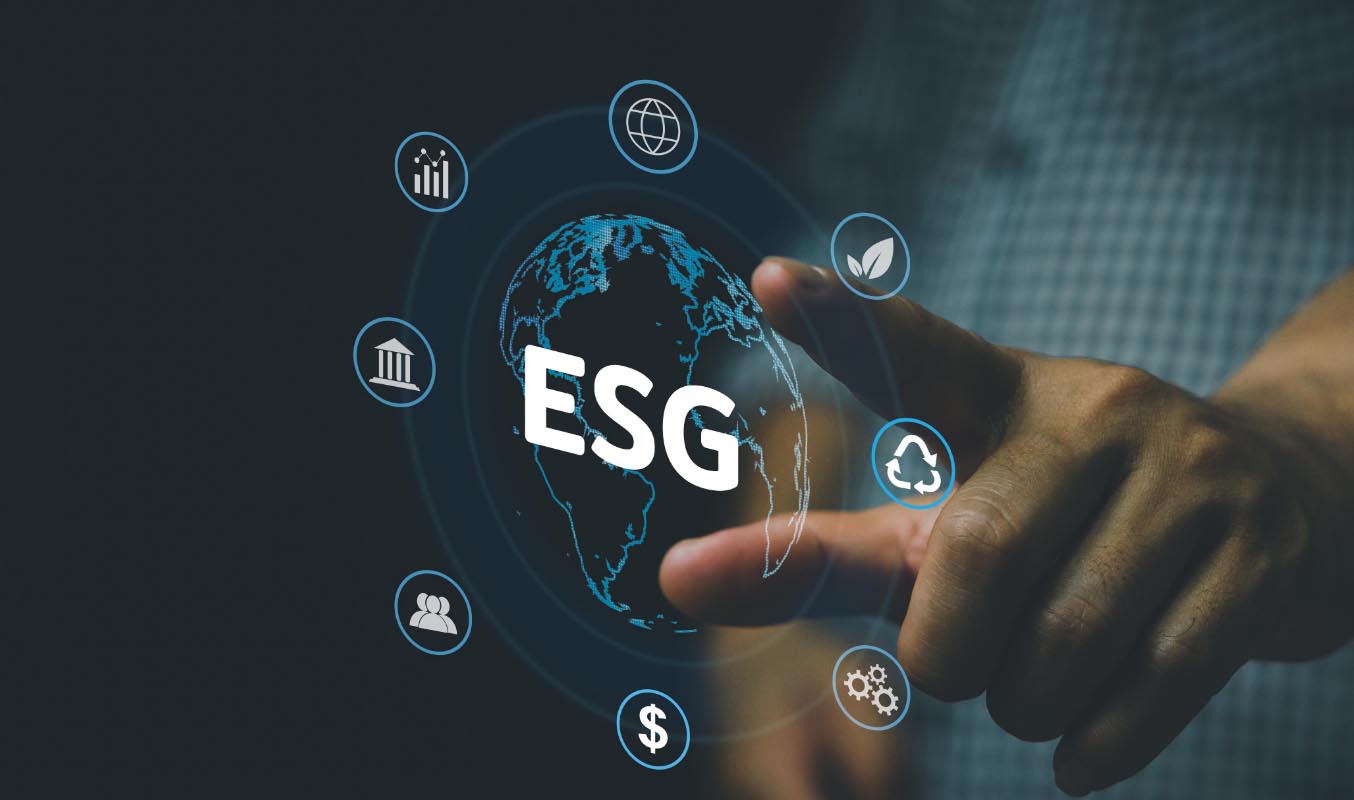Tech
The Role of ESG Compliance Software in Risk Management

Introduction
As environmental, social, and governance (ESG) factors continue to gain prominence in the global business landscape, companies are increasingly under pressure to demonstrate their commitment to sustainability, ethical practices, and good governance. Investors, consumers, and regulators are demanding greater transparency and accountability, which has led organizations to adopt robust ESG strategies. However, managing ESG compliance can be a complex and time-consuming task, especially as regulations and expectations evolve rapidly.
To address these challenges, businesses are turning to ESG compliance software. This powerful tool helps organizations streamline the management of ESG-related risks and ensure compliance with both local and international regulations. In this article, we’ll explore the role of ESG compliance software in risk management, how it can help mitigate potential ESG-related risks, and why it’s an essential component for businesses looking to stay ahead in today’s regulatory environment.
What is ESG Compliance Software?
ESG compliance software is a specialized tool that helps organizations track, manage, and report on their environmental, social, and governance activities. The software is designed to assist businesses in meeting regulatory requirements, tracking sustainability performance, and improving transparency. ESG compliance software typically integrates with existing business systems and provides features such as data collection, analytics, reporting, and audit trails to ensure that companies adhere to relevant ESG standards and regulations.
Given the increasing complexity of ESG regulations, ESG compliance software plays a vital role in helping businesses stay compliant and effectively manage risks related to environmental impact, social responsibility, and corporate governance.
The Role of ESG Compliance Software in Risk Management
1. Mitigating Regulatory Risk
One of the most significant challenges in ESG compliance is staying up to date with ever-evolving regulations. Governments worldwide are introducing stricter ESG-related laws, and non-compliance can result in hefty fines, legal action, or damage to an organization’s reputation. For instance, the European Union’s Corporate Sustainability Reporting Directive (CSRD) mandates comprehensive ESG disclosures for certain companies, while the U.S. Securities and Exchange Commission (SEC) has also introduced rules on climate-related disclosures.
ESG compliance software helps organizations monitor these regulatory changes and ensure that they comply with the latest requirements. The software can automatically update itself to reflect changes in local and international regulations, allowing businesses to adapt their processes and reporting structures quickly. This reduces the risk of non-compliance and potential penalties.
Moreover, ESG compliance software allows businesses to track compliance across different jurisdictions. For companies operating globally, this is a crucial feature, as regulations vary significantly across regions. The software helps ensure that all regional compliance requirements are met, mitigating the risk of overlooking critical regulations.
2. Managing Environmental Risk
Environmental risks are often at the forefront of ESG concerns. These risks can include the company’s carbon footprint, waste management practices, water usage, and energy consumption. Companies that fail to address environmental risks may face environmental penalties, reputational damage, or increased operational costs due to inefficiencies.
ESG compliance software enables companies to monitor their environmental performance in real-time, track progress towards sustainability goals, and identify areas for improvement. By collecting data on various environmental metrics—such as greenhouse gas emissions, energy usage, and waste management—the software helps businesses ensure they are meeting environmental regulations and reducing their ecological footprint. This proactive monitoring helps mitigate the risk of non-compliance with environmental laws and regulations.
Additionally, ESG compliance software often includes tools for scenario analysis, allowing companies to assess the potential financial and operational impact of different environmental risks, such as climate change, resource scarcity, or pollution. This helps businesses make data-driven decisions to manage environmental risks and align their operations with long-term sustainability goals.
3. Addressing Social and Governance Risks
In addition to environmental risks, ESG compliance software also helps businesses address social and governance risks. These risks could include issues such as labor rights violations, employee safety, diversity and inclusion, corruption, and board accountability. Social and governance risks are increasingly scrutinized by investors, stakeholders, and regulators, and failing to address them can lead to reputational damage, legal liabilities, and financial penalties.
ESG compliance software enables companies to track their performance in these areas, monitor compliance with labor laws, and ensure that their operations align with social and governance best practices. For example, the software can track diversity and inclusion metrics, employee satisfaction surveys, and supplier labor practices to ensure that companies are meeting their social responsibility objectives.
For governance-related risks, ESG compliance software helps ensure transparency in corporate governance practices. It allows businesses to monitor board diversity, executive compensation, shareholder rights, and anti-corruption measures. By tracking these key governance metrics, companies can identify potential governance risks before they escalate, helping to protect their reputation and avoid legal or regulatory issues.
4. Enhancing Transparency and Accountability
Transparency is a core principle of ESG compliance, and investors and stakeholders are demanding greater visibility into a company’s sustainability efforts. Greenwashing, or making misleading claims about sustainability, has become a growing concern, and companies must ensure that their ESG reports are accurate and substantiated.
ESG compliance software enhances transparency by providing an automated, centralized platform for tracking and reporting ESG data. With features like real-time data collection, audit trails, and built-in reporting templates, the software ensures that all ESG disclosures are accurate, consistent, and verifiable. This level of transparency builds trust with stakeholders and reduces the risk of reputational damage caused by false or misleading claims.
Furthermore, ESG compliance software often includes tools for managing stakeholder communication, enabling businesses to report ESG performance to investors, customers, and regulatory bodies in a clear and standardized manner. This facilitates better decision-making and ensures that all parties have access to the same reliable data.
5. Improving Operational Efficiency and Cost Savings
Effective risk management also involves optimizing operations and reducing costs. Many aspects of ESG compliance, such as energy consumption, waste management, and supply chain sustainability, can significantly impact operational costs. By monitoring these factors, businesses can identify inefficiencies and implement measures to improve sustainability and reduce costs.
ESG compliance software helps companies streamline their ESG processes by automating data collection, reporting, and analysis. This reduces the administrative burden on staff and minimizes the risk of human error. Additionally, by identifying areas for improvement, the software enables companies to implement more sustainable practices that can lead to long-term cost savings, such as reducing energy consumption, improving waste management practices, and optimizing resource usage.
6. Facilitating Decision-Making and Strategic Planning
In today’s fast-paced business environment, companies need to be agile and make data-driven decisions quickly. ESG compliance software provides businesses with real-time insights into their ESG performance, allowing them to make informed decisions that align with their sustainability goals.
With access to comprehensive ESG data, companies can integrate sustainability into their strategic planning and long-term decision-making processes. This helps them proactively manage risks, seize opportunities, and stay ahead of emerging ESG trends. Moreover, ESG compliance software can assist in setting realistic sustainability targets and monitoring progress toward achieving them, ensuring that companies are constantly improving their ESG performance.
Conclusion
ESG compliance software plays a critical role in risk management by helping businesses stay compliant with evolving regulations, mitigate environmental and social risks, enhance transparency, and improve operational efficiency. By automating the collection, analysis, and reporting of ESG data, this software empowers organizations to track their sustainability efforts in real-time and ensure they are meeting both regulatory and stakeholder expectations.
In today’s increasingly ESG-conscious world, businesses that fail to manage their ESG risks effectively are at a competitive disadvantage. By leveraging ESG compliance software, organizations can not only ensure compliance but also create long-term value for stakeholders, improve their reputation, and build resilience against potential risks. As ESG continues to be a key driver of corporate performance, having the right compliance tools in place will be essential for businesses looking to succeed in a sustainable future.
